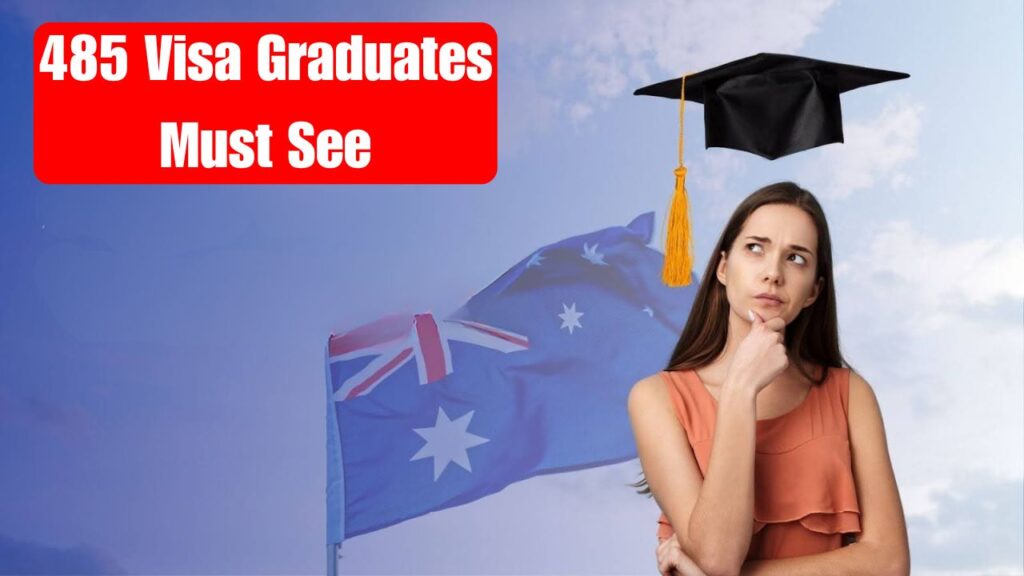PR for International Graduates – The Visa Options After 485 pathway is one of the most important considerations for international graduates who wish to build a long-term future in Australia. After completing their Temporary Graduate Visa (subclass 485), many students look for the best migration options that can help them secure permanent residency. This article explains the most reliable PR pathways available in Australia, including employer sponsorship, skilled migration, and regional programs. By understanding these options clearly, graduates can make informed decisions that align with their career goals and long-term plans in the country.

Skilled Migration Options for Australian Graduates
Many international graduates explore skilled migration as one of the strongest Visa Options After 485 in Australia. This pathway allows eligible applicants to apply for permanent residency based on their skills, qualifications, and occupation demand. Australian graduates often consider visas such as the Skilled Independent Visa (189), Skilled Nominated Visa (190), and Skilled Work Regional Visa (491). Each option requires meeting specific eligibility rules, including occupation lists, points scores, and English requirements. For graduates committed to long-term settlement, skilled migration offers flexibility, nationwide opportunities, and the potential to achieve PR without needing employer sponsorship.
Employer-Sponsored Visa Pathways for Australians
Another strong pathway under the Visa Options After 485 is the employer-sponsored visa route, which is beneficial for graduates who secure full-time skilled work in Australia. Visas like the Temporary Skill Shortage Visa (482) and the Employer Nomination Scheme Visa (186) allow applicants to transition from a temporary graduate visa to permanent residency through stable employment. This pathway is ideal for individuals whose occupations are in demand and who can demonstrate relevant work experience. Employers often support skilled graduates by providing long-term roles, making this option one of the most stable routes toward achieving Australian PR.
| Visa Type | Main Purpose | PR Pathway |
|---|---|---|
| Subclass 189 | Points-tested skilled workers | Direct PR |
| Subclass 190 | State-nominated skilled workers | Direct PR |
| Subclass 491 | Regional skilled workers | PR via Subclass 191 |
| Subclass 482 | Employer-sponsored work | Transition to 186 |
| Subclass 186 | Permanent employer nomination | Immediate PR |
Regional PR Pathways for People Across Australia
Regional migration continues to be one of the most rewarding Visa Options After 485 for graduates willing to live and work outside major cities. Australia’s regional areas offer visas such as the Skilled Work Regional Visa (491) and the Skilled Employer Sponsored Regional Visa (494), both of which come with clear PR advantages. Regional states actively nominate applicants whose occupations are in demand, offering easier requirements, faster processing times, and additional points for regional living. Graduates choosing this pathway often find strong employment opportunities and a community-focused environment, making it a practical and appealing route toward permanent residency.
Permanent Residency Planning for Australian Residents
Planning ahead is essential for graduates exploring Visa Options After 485, especially when aiming for permanent residency in Australia. Many residents begin by improving their points score through English tests, skilled work experience, or completing additional education. Others focus on securing employer sponsorship or moving to a regional area to increase PR chances. A structured plan helps applicants make better decisions about their next visa, occupation assessments, and state nomination opportunities. With clear preparation, international graduates can navigate Australia’s immigration system confidently and move closer to securing long-term residency.
Frequently Asked Questions (FAQs)
1. What is the best visa option after a 485 visa?
The best option depends on your occupation, job offer, and points score, with 189, 190, 491, and 482 being common choices.
2. Can I apply for PR directly after my 485 visa?
You can apply directly if you meet skilled visa requirements such as points, occupation list, and English scores.
3. Do regional visas offer faster PR pathways?
Yes, regional visas often have easier requirements and provide a clear transition to permanent residency.
4. Can employer sponsorship help me get PR in Australia?
Yes, employer-sponsored visas like 482 and 186 allow graduates to transition to permanent residency through skilled employment.




